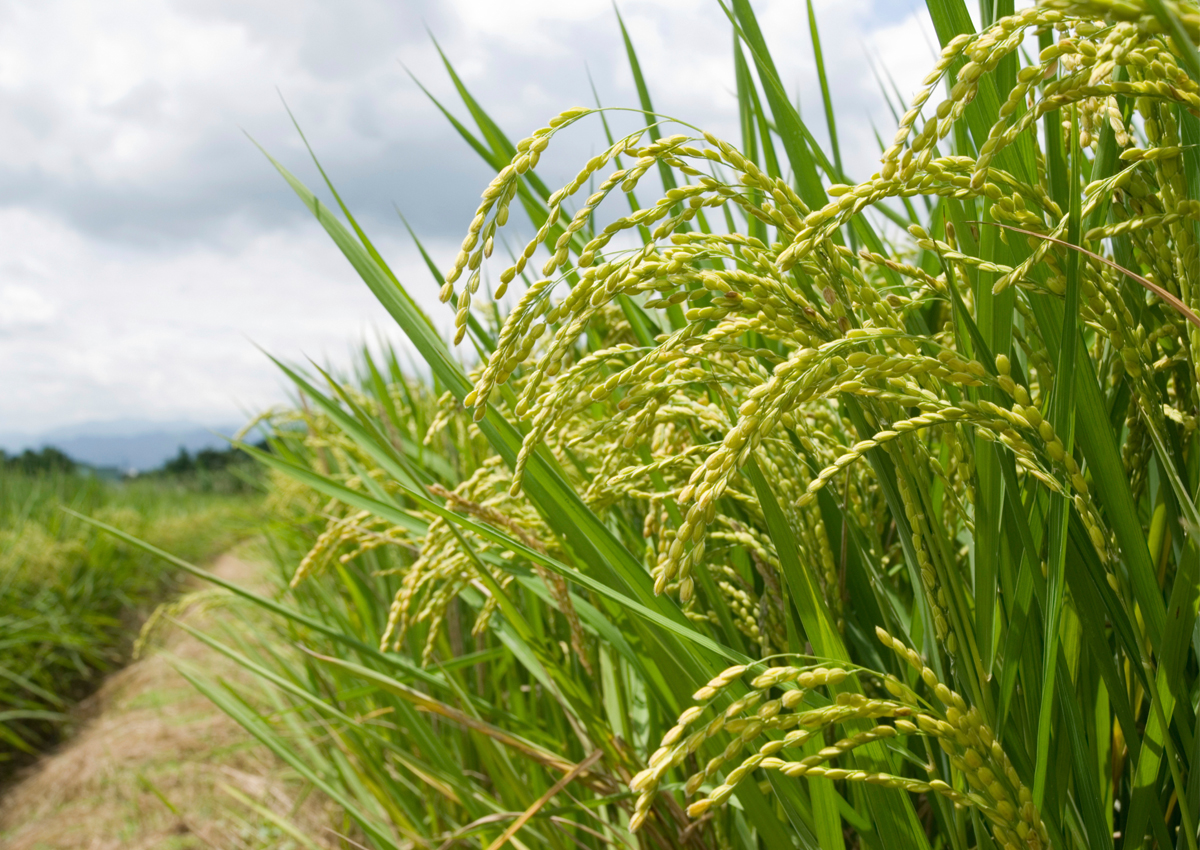
Researchers Find Flag Leaves Top Off Rice Photosynthetic Performance
January 6, 2021| |
A team of researchers from the University of Illinois and the International Rice Research Institute (IRRI) found that some flag leaves of different rice varieties transform light and carbon dioxide into carbohydrates better than others, potentially opening new opportunities for breeding higher-yielding rice varieties.
For the first time, the research group revealed considerable differences among rice varieties in the ability of flag leaves to adjust to fluctuating light. They also showed that the ability to adjust differs between the flag leaf and leaves formed before flowering. Six rice varieties chosen to represent the breadth of genetic variation across a diverse collection of more than 3,000 were analyzed as a first step in establishing if there was variation in the ability to cope with fluctuations in light.
In their study, the researchers discovered the flag leaf of one rice variety that began photosynthesizing nearly twice (185%) as fast as the slowest. Another top-performing flag leaf fixed 152% more sugar. The research team also found large differences (77%) in how much water the plant's flag leaves exchanged for the carbon dioxide that fuels photosynthesis. Additionally, they found that water-use efficiency in flag leaves correlated with water-use efficiency earlier in the development of these rice varieties, suggesting that water-use efficiency in dynamic conditions could be screened for at younger stages of rice development.
For more details, read the article in Illinois IGB.
| |
You might also like:
- Scientists Unravel Mystery of Photosynthesis
- Rice Plants Engineered for Better Photosynthesis Make More Rice
- Rice 'Supercharged' with Maize Gene May Help Boost Yields
Biotech Updates is a weekly newsletter of ISAAA, a not-for-profit organization. It is distributed for free to over 22,000 subscribers worldwide to inform them about the key developments in biosciences, especially in biotechnology. Your support will help us in our mission to feed the world with knowledge. You can help by donating as little as $10.
-
See more articles:
-
News from Around the World
- ISAAA Presents 2019 Biotech Adoption Findings to Stakeholders in Europe and South America
- UBIC Builds NARO Anti-tick Vaccine Team's Capacity for Biosafety Compliance
- CIMMYT Announces Fall Armyworm Tolerant Maize Hybrids for Africa
- Researchers Find Flag Leaves Top Off Rice Photosynthetic Performance
- USDA APHIS Deregulates GE Corn with Enhanced Yield and Herbicide Tolerance Traits
- Price, Nutrition Among Top Factors that Affect Canadian Consumers' Choice to Buy GM Foods
- Scientists Boost Vegetable Oil Production in Plant Leaves
- CSIRO "Gene Sandwich" to Boost Wheat Resistance to Rust
-
Research Highlights
- Bt Cotton Key in Eradicating Destructive Pest from the US and Mexico
-
Plant
- Target-AID and CRISPR-Cas9 Improve Lycopene Content in Tomatoes
- What are TALENs?
-
Health
- Fast-spreading SARS-CoV-2 Variant in the U.K. Raises More Questions
-
Read the latest: - Biotech Updates (November 12, 2025)
- Gene Editing Supplement (October 29, 2025)
- Gene Drive Supplement (February 22, 2023)
-
Subscribe to BU: - Share
- Tweet

